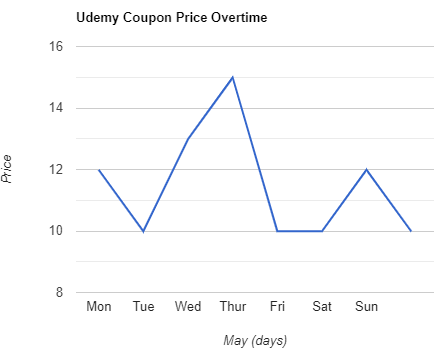Design Patterns in C# and .NET (Udemy.com)
Discover the modern implementation of design patterns with C# and .NET
Created by: Dmitri Nesteruk
Produced in 2022
 What you will learn
What you will learn
- Recognize and apply design patterns
- Refactor existing designs to use design patterns
- Reason about applicability and usability of design patterns
 Quality Score
Quality Score
Overall Score : 84 / 100
 Live Chat with CourseDuck's Co-Founder for Help
Live Chat with CourseDuck's Co-Founder for Help
 Course Description
Course Description
This course provides a comprehensive overview of Design Patterns in C# and .NET from a practical perspective. This course in particular covers patterns with the use of:
- The latest versions of C# and the .NET framework
- Use of modern programming approaches: dependency injection, reactive programming and more
- Use of modern developer tools such as ReSharper
- Discussions of pattern variations and alternative approaches
What are Design Patterns?
Design Patterns are reusable solutions to common programming problems. They were popularized with the 1994 book Design Patterns: Elements of Reusable Object-Oriented Software by Erich Gamma, John Vlissides, Ralph Johnson and Richard Helm (who are commonly known as a Gang of Four, hence the GoF acronym).
The original book was written using C++ and Smalltalk as examples, but since then, design patterns have been adapted to every programming language imaginable: C#, Java, PHP and even programming languages that aren't strictly object-oriented, such as JavaScript.
The appeal of design patterns is immortal: we see them in libraries, some of them are intrinsic in programming languages, and you probably use them on a daily basis even if you don't realize they are there.
What Patterns Does This Course Cover?
This course covers all the GoF design patterns. In fact, here's the full list of what is covered:
- SOLID Design Principles: Single Responsibility Principle, Open-Closed Principle, Liskov Substitution Principle, Interface Segregation Principle and Dependency Inversion Principle
- Creational Design Patterns: Builder, Factories (Factory Method and Abstract Factory), Prototype and Singleton
- Structrural Design Patterns: Adapter, Bridge, Composite, Decorator, Faade, Flyweight and Proxy
- Behavioral Design Patterns: Chain of Responsibility, Command, Interpreter, Iterator, Mediator, Memento, Null Object, Observer, State, Strategy, Template Method and Visitor
This course is for .NET/C# developers who want to see not just textbook examples of design patterns, but also the different variations and tricks that can be applied to implement design patterns in a modern way. For example, the introduction of the DLR allows us to use an ImpromptuObject, so that our DynamicObject exposes any interface we desire. This allows for dynamic programming, and many design patterns are presented in terms of their static and DLR-based variations.
Presentation Style
This course is presented as a (very large) series of live demonstrations being done in Microsoft Visual Studio. Most demos are single-file, so you can download the file attached to the lesson and run it in Visual Studio, Visual Studio Code, Rider or another IDE of your choice.
This course does not use UML class diagrams; all of demos are live coding. I use Visual Studio, various NuGet packages, R# unit test runner and even dotMemoryUnit.
Who this course is for:
- Beginner and experienced developers
- Anyone interested in design patterns
 Instructor Details
Instructor Details

- 4.2 Rating
 100 Reviews
100 Reviews
Dmitri Nesteruk
Dmitri Nesteruk is a quant, developer, book author and course author. His interests lie in software development and integration practices in the areas of computation, quantitative finance and algorithmic trading. His technological interests include C#, F# and C++ programming as well high-performance computing using technologies such as CUDA and FPGAs. He has been a C# MVP since 2009.
Dmitri is a graduate of University of Southampton (B.Sc. Computer Science) where he currently holds a position as a Visiting Researcher. He is an author of dozens of courses on Pluralsight, Udemy and elsewhere, covering a wide range of topics including programming, finance and mathematics.







